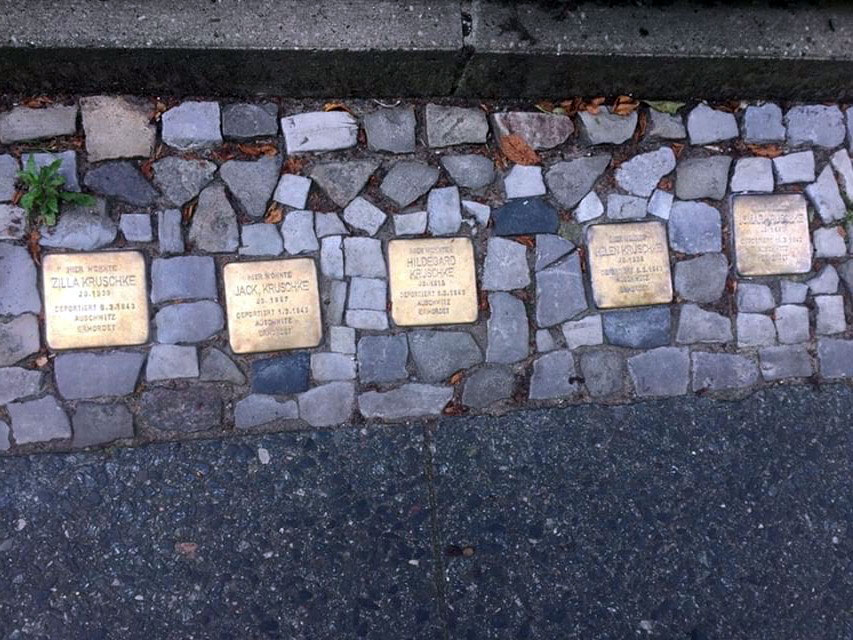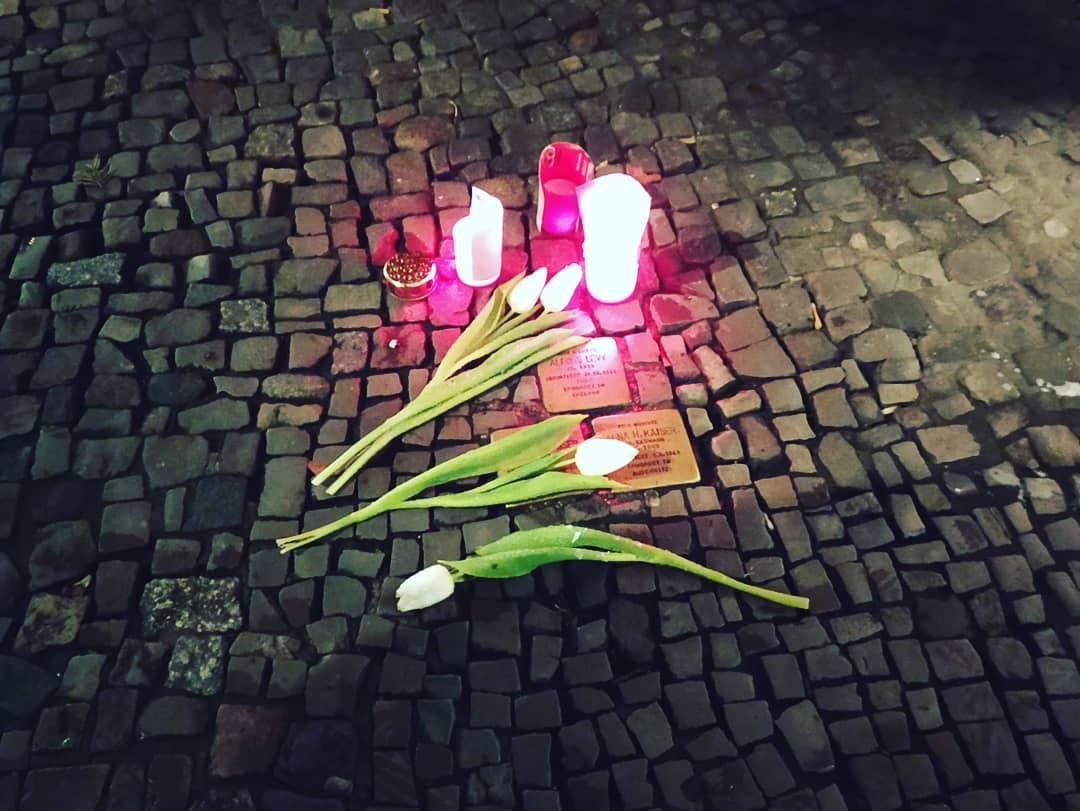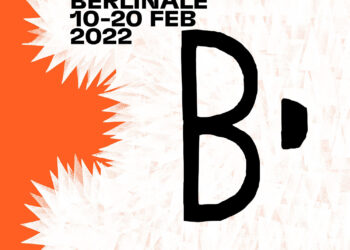As you walk through the streets of Berlin, you can see small gold plaques embedded between the sidewalk tiles on the floor. These striking plates are known as ‘Stolpersteine’. Sometimes we find just one, other times two and there can be up to 8 together but always in the same location: in front of buildings.
The fact is that these plates, which are actually 10 x 10 x 10 cm pieces of stone covered with polished brass, indicate that a person who was a victim of the Nazi genocide with her year of birth, the concentration camp she was taken to, and the estimated date she was killed.
This was created by German artist Gunter Demnig who proposed that it would be more interesting to make millions of simple monuments placed all over the place rather than just one on a specific place. Thus, on December 16, 1992, he laid the first stone in front of the Cologne city hall where you can read the first lines of the decree of deportation to concentration camps promulgated by the leader of the SS, Schutzstaffel, Heinrich Himmler in 1942 also known as the” final solution to the Jewish question “.
One night in 1995, after having exhibited some 250 plates, he illegally placed the first Stolpersteine on the sidewalks of Cologne since he did not have the consent of the city council . The following year he did the same in Berlin, this time placing 51 plaques on Orianienstrasse. It was only in 1997 when he was able to place the first two stones legally in the town of Salzburg, Austria, supported by the Austrian Service of Memory that is dedicated to the memory of the victims of Nazism in that country.

By January 2016 there were more than 50,000 Stolperteine in different European countries such as Spain, Italy, the Netherlands, Hungary, and of course, Germany and Austria.
Guter Demnig’s idea is to put up all the plaques that are necessary to commemorate Jews, homosexuals, gypsies, Jehovah’s Witnesses, marginalized, the persecuted as misfits, and the people who participated in the resistance victims of National Socialism.
Already, these plates surprise all over the city of Berlin, but the most curious thing was the re-significance that is given to them every 27th of January as it is International Day in memory of the victims of the Holocaust as it was the date that Soviet troops liberated the Auschwitz-Birkenau concentration camp in 1945.
There are no graves to mourn, the bodies are missing but their names are all over Europe immortalized on these plaques and it is there, in the middle of the sidewalk, where people turn them on candles, they leave flowers or stones for their ancestors.

What does Stolpersteine mean?
‘Stolpersteine’ in the plural or ‘Stolperstein’ in the singular, is a German word that designates a stone on the road that can trip a walker . And the fact is that the plates are placed in such a way that they protrude slightly from the sidewalk and can cause this stumbling effect so that the walker stops and leans to read the information that is written on it.
The Stolpersteine are financed by donations from private citizens, college students, professional associations and communes but there are also other ways to help such as being part of the biographical investigations of the murdered people and the location of your last place of residence, the cleaning of plates in each city and managing Stolpersteine orders in each neighborhood, among other things.
If you want to know more about this project and find the Stolpersteine in your neighborhood, you can go to their official website: https://www.stolpersteine-berlin.de/en/project

 Club Lado|B|erlin
Club Lado|B|erlin





